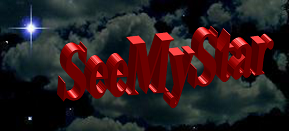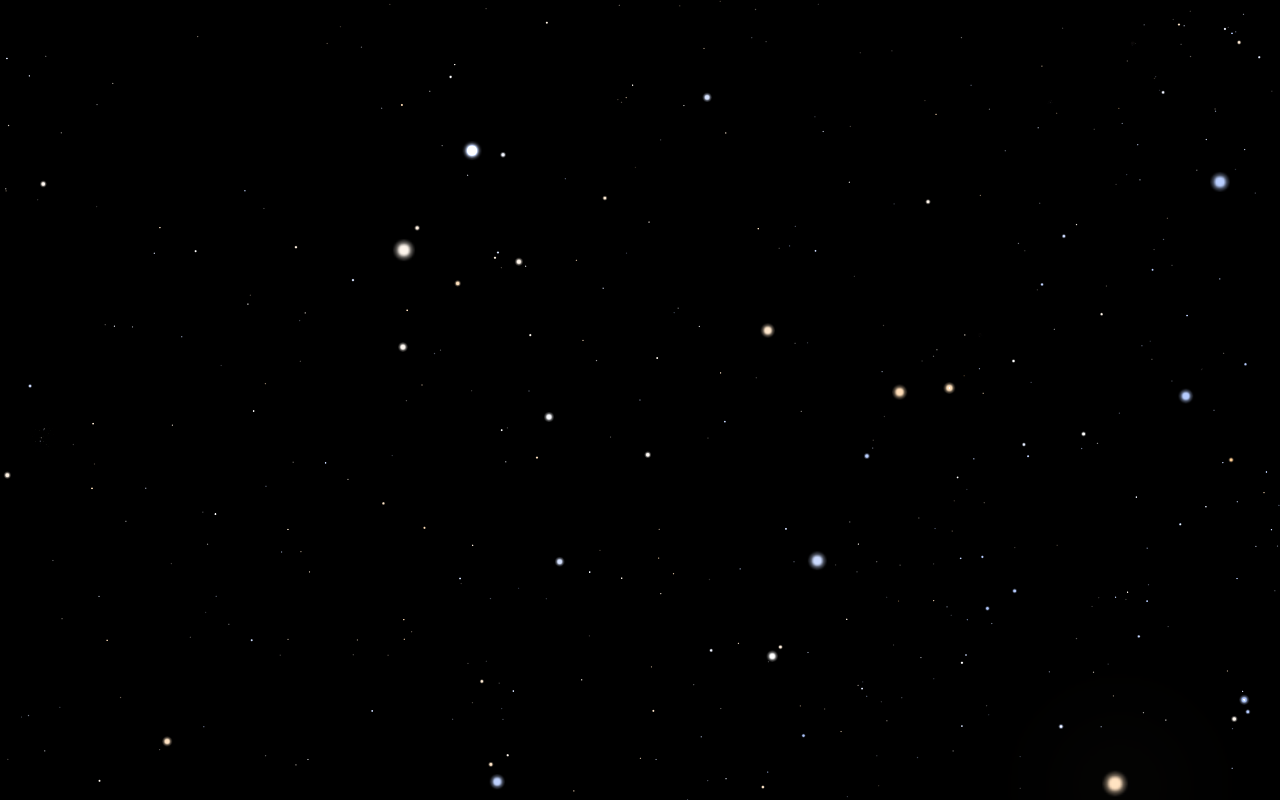

About the website
- Claiming stars
- Star messages
- The constellations
- The stars
- Support SeeMyStar
- Author and publisher
- Book
Claiming stars
On this website you can claim stars in your favourite constellations. For each star you can add a message which will pop up whenever anyone clicks on the star. Information about the star itself is also displayed. If the star has no message yet, the pop up tells you whether the star is free or has a rental; there is also a link to click on if you wish to claim it and write your message.
Stars are either free or to rent, depending on brightness. Each person is allowed one free star. You can have as many rented stars as you wish. Currently, all stars of brightness 30 or less are free (the majority, in fact); brighter stars have a small yearly fee which depends on brightness.
For each star you can attach a message of up to 300 characters, plus a heading. If you wish you can also add a link to your own website. The message will appear when the star is clicked.
Choose a constellation by clicking the down arrow below the constellation name. The list that appears also displays the number of messages in each constellation. The stars that have already been claimed and have a message will be flashing.
Star messages
Your star message can be anything you like — a celebration of some special event or occasion, a 'thank you', a wish, a remembrance, a promotion of a product, company or website, a message to the world, a personal goal, a special something to family or friends, a poem, a text picture or perhaps some other demonstration of your creativity and imagination...
Once a message has been created it cannot usually be changed. However, if there is a special reason to make an edit, you can contact us.
To indicate that they have a message, stars flash. Free stars simply flash on and off. Rented stars have a small, coloured, flashing symbol to make them more prominent (the colour is associated with the brightness).
To stop the flashing, click on the button '– Flashing'. The grey number next to the button tells you how many messages there are currently in the particular constellation.
The constellations
The night sky is divided into separate constellations. On this website, each constellation has its own page with a fixed map of its stars. Only the stars within the particular constellation's red border are clickable.
The 'Zoom out' button at the top allows you to see how each constellation relates to its neighbours in the sky. However, you need to zoom back in if you want to click on stars.
If you wish to see a natural view of the sky without markings, use the button '- Markings'.
Having the maps fixed makes it simple and fast to find a particular constellation without having to scroll around the sky searching.
The first constellation shown when you visit the website is randomly chosen from the list in the database. To change the constellation, click on the down arrow next to 'Choose a constellation'.
More gradually being added on request
At present there are maps for a selection of the most-well-known constellations visible from the northern hemisphere. More constellations will gradually be added, making more stars available. The information for each star is added manually into the website database, and this takes time.
It is planned that eventually all constellations of both the northern and southern sky will be included. If there is a particular constellation that you strongly wish to be added sooner rather than later, please get in touch.
An advantage of not presenting all the 88 constellations of the night sky during the early days of the website is that the first messages that are posted will be easier to find, and therefore more often viewed.
Another benefit is that people who are unfamiliar with the night sky can learn to recognise these present constellations first, and then later become familiar with the new ones as they are added, rather than being totally overwhelmed from the beginning.
If you would like information about a particular constellation, a good resource is the Wikipedia list of all the modern constellations. Scroll down to find the constellation of your choice and click/tap on its name.
The stars
The size of the brighter stars on the maps is somewhat exaggerated compared with their appearance in the real night sky; this is in order to make them clearer on screens in daylight.
Click on stars within the dashed red constellation border to find out how much they are to rent, to see any messages, or to find information about the real star itself. Very faint stars may not be clickable. To claim an available star, just follow the link.
If you would like comprehensive information about a particular star, a good place is the Wikipedia list of stars by constellation. Scroll down to find the constellation of your choice and click/tap on its name. This will take you to a list of all the main stars of that constellation in order of brightness and you can scroll down to the one you are interested in. If it is coloured blue, its name is a link to its own page.
Brightness
The 'brightness' scale has been invented for SeeMyStar by the website developer, Edmund Wood, in order to provide an easily-understood way of comparing stars. Astronomers use a measurement called 'magnitude' to denote a star's brightness; however, it is rather cumbersome and complicated.
The new scale is designed to go from 0 to 100, with the brightest star in the night sky, Sirius, at a brightness of 100.
50 is an averagely bright star that should be clearly visible as part of a constellation's main stars.
20 is about the dimmest brightness visible to the unaided eye in a clear, dark sky.
A star of brightness 0 should still just be visible with 7X50 binoculars in good conditions.
For those who are curious, and mathematically minded,
brightness = round(85.4 - magnitude * 10).
From this you should be able to deduce the magnitude of Sirius. :)
Support SeeMyStar
If you like SeeMyStar you can help to support its further development by renting a star, or by telling all your friends on social media, or both. Thanks!
Author and publisher
SeeMyStar is the creation of Edmund Wood, who is a web designer and web developer and also an amateur astronomer.
The website is published by The Birchley Hall Press, which is the UK internet publishing company of Harry Wood.
If you would like us to produce a website for you, please get in touch through the publisher.
Book
Edmund Wood has also written a free ebook called The Well-Balanced Universe, which is about the structure of the universe and why the big bang theory is a load of b*££*€#s.